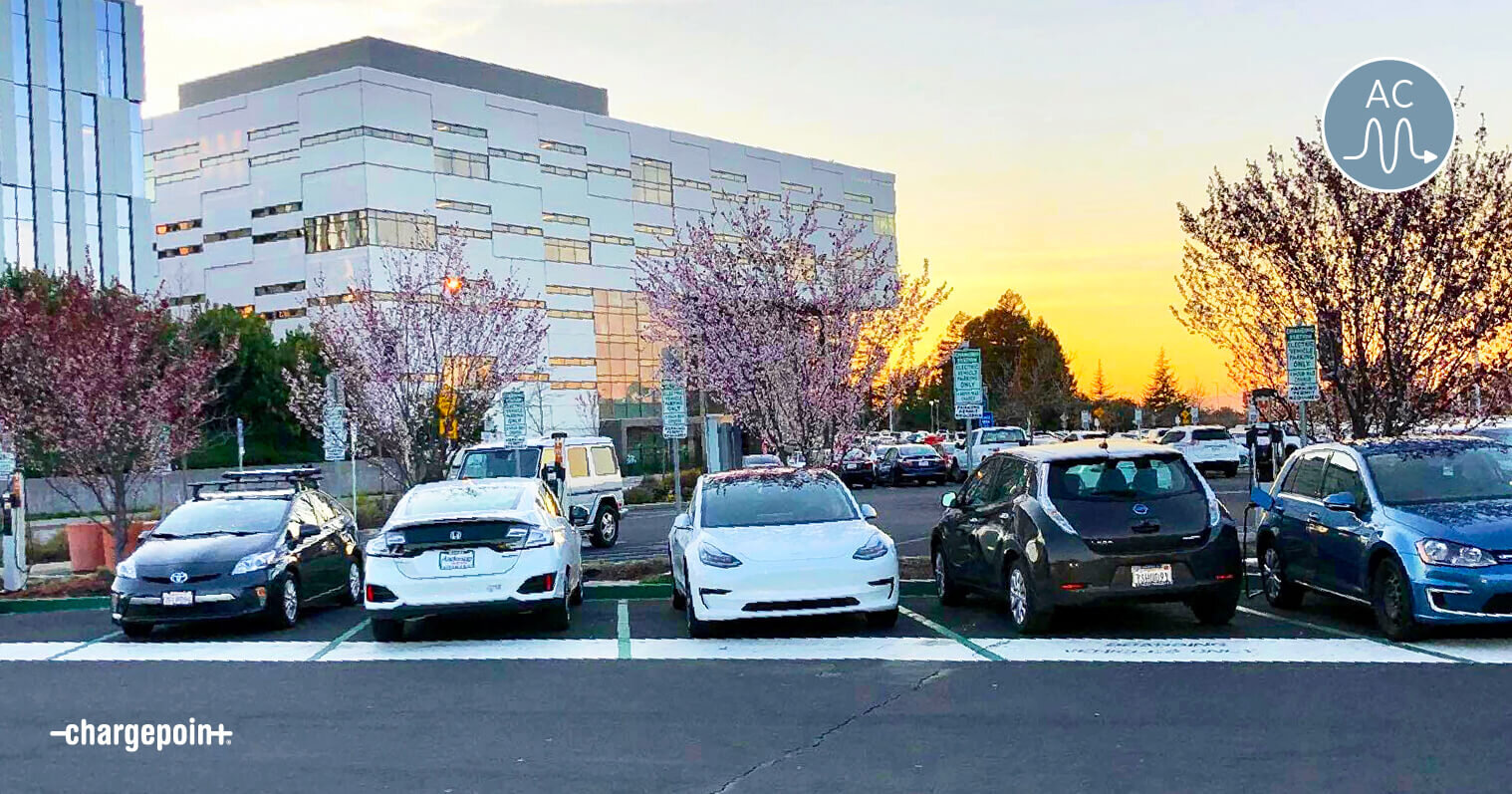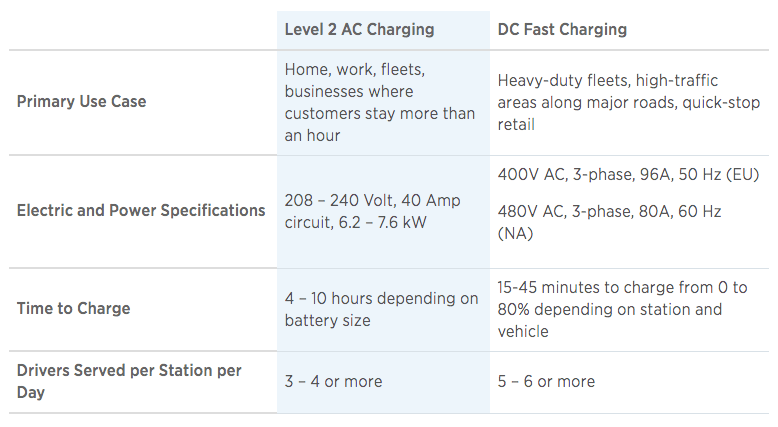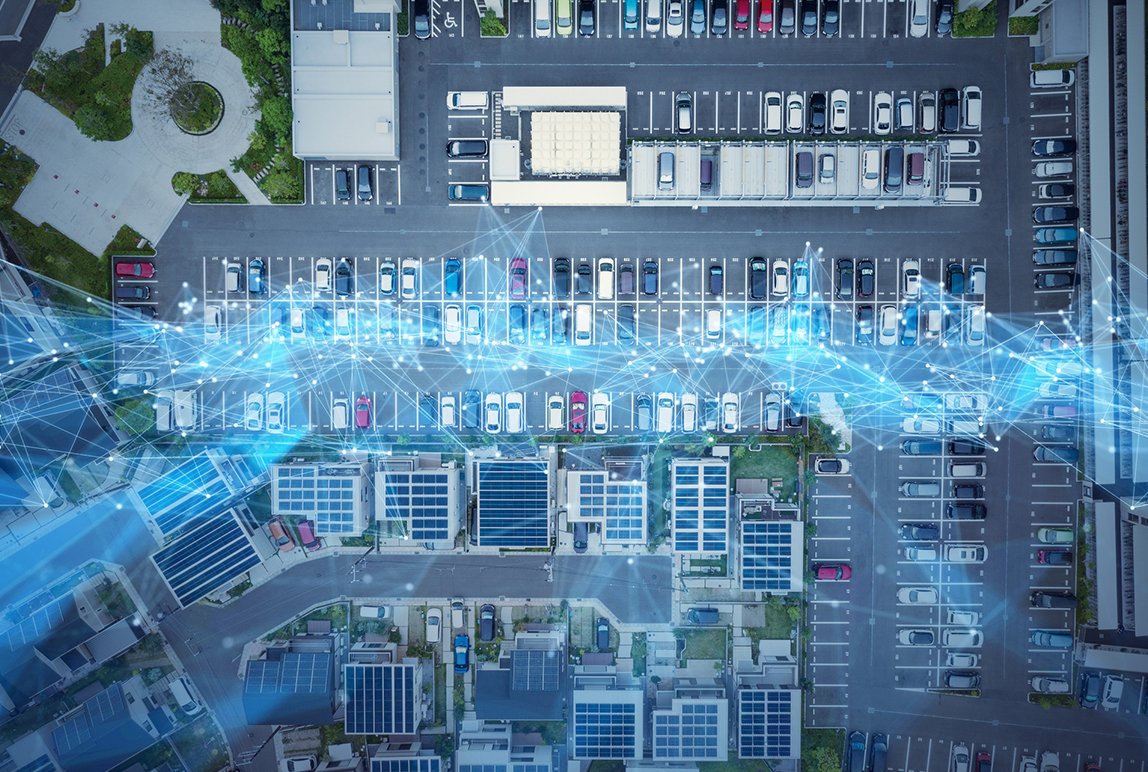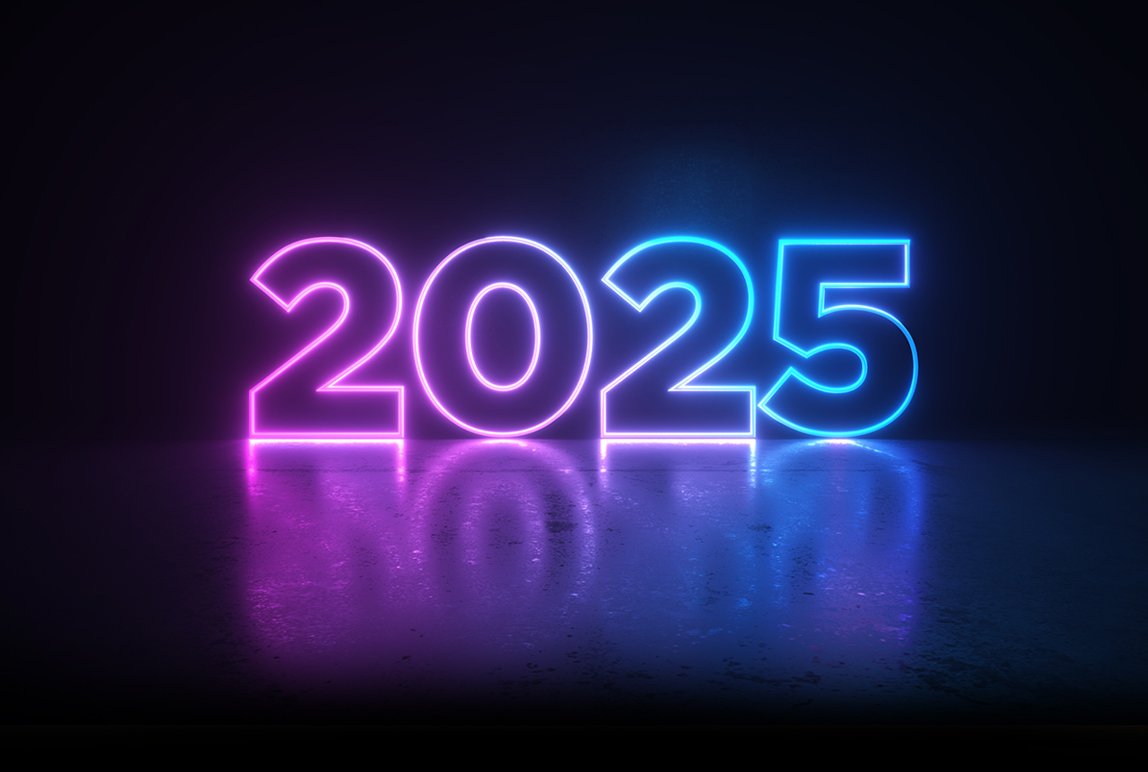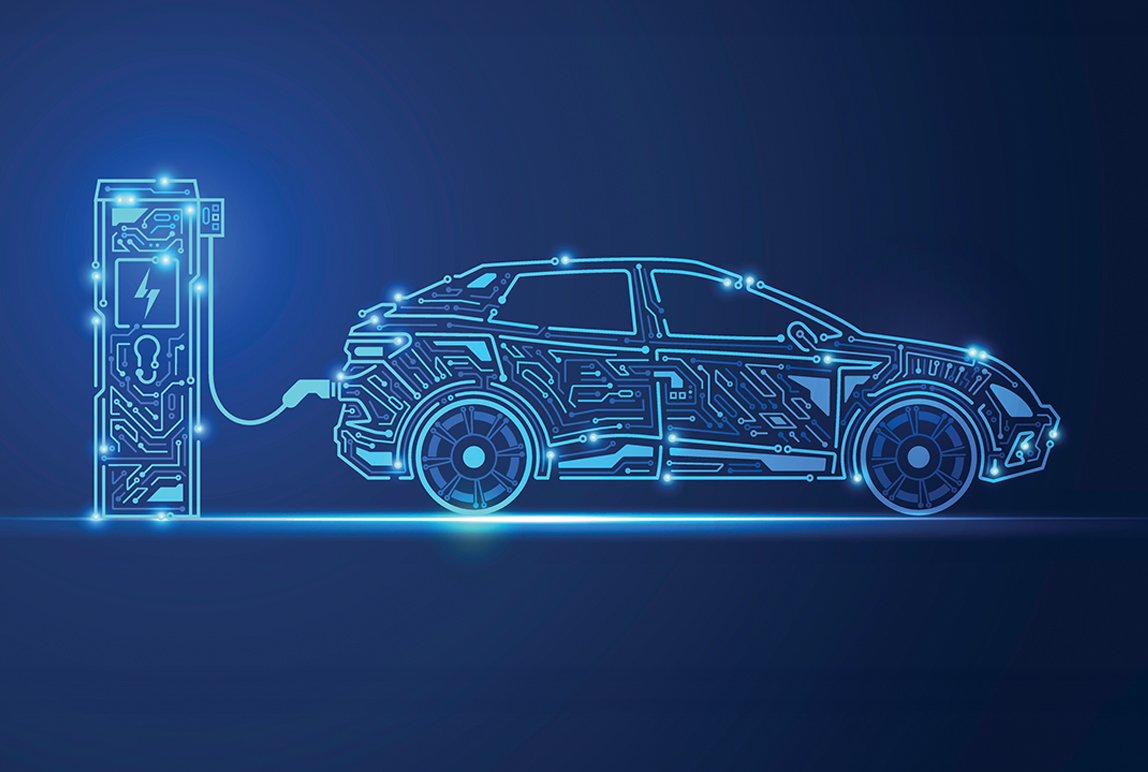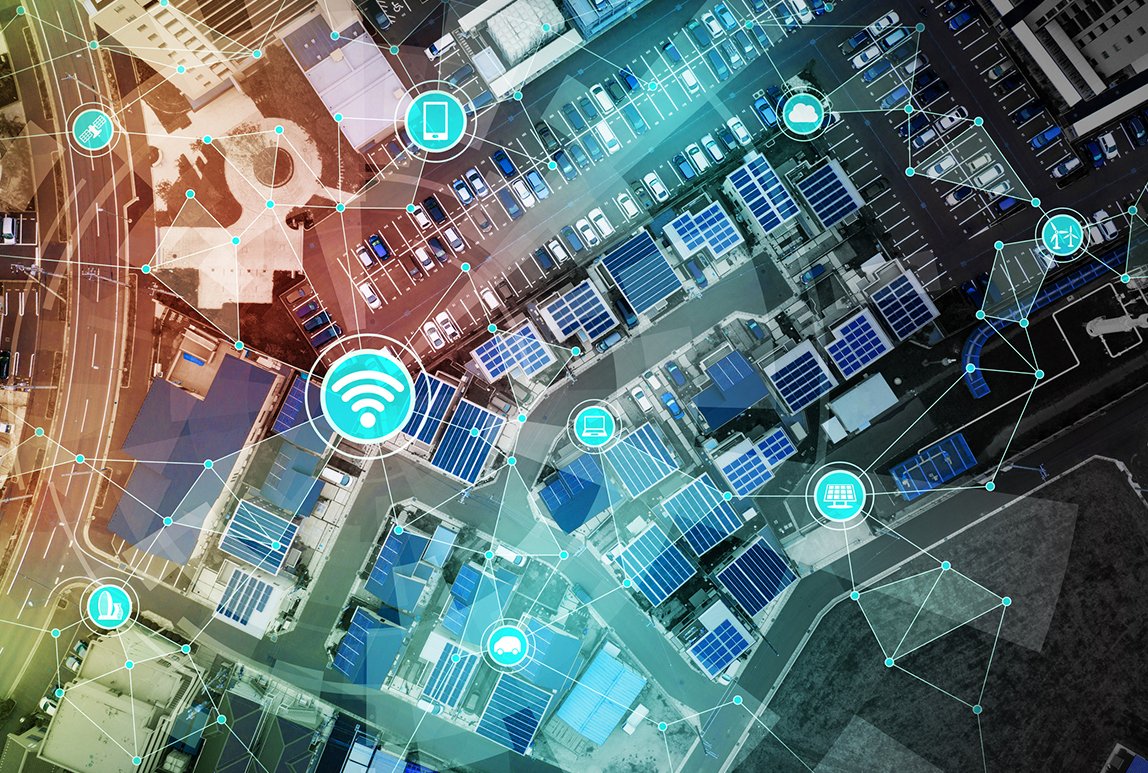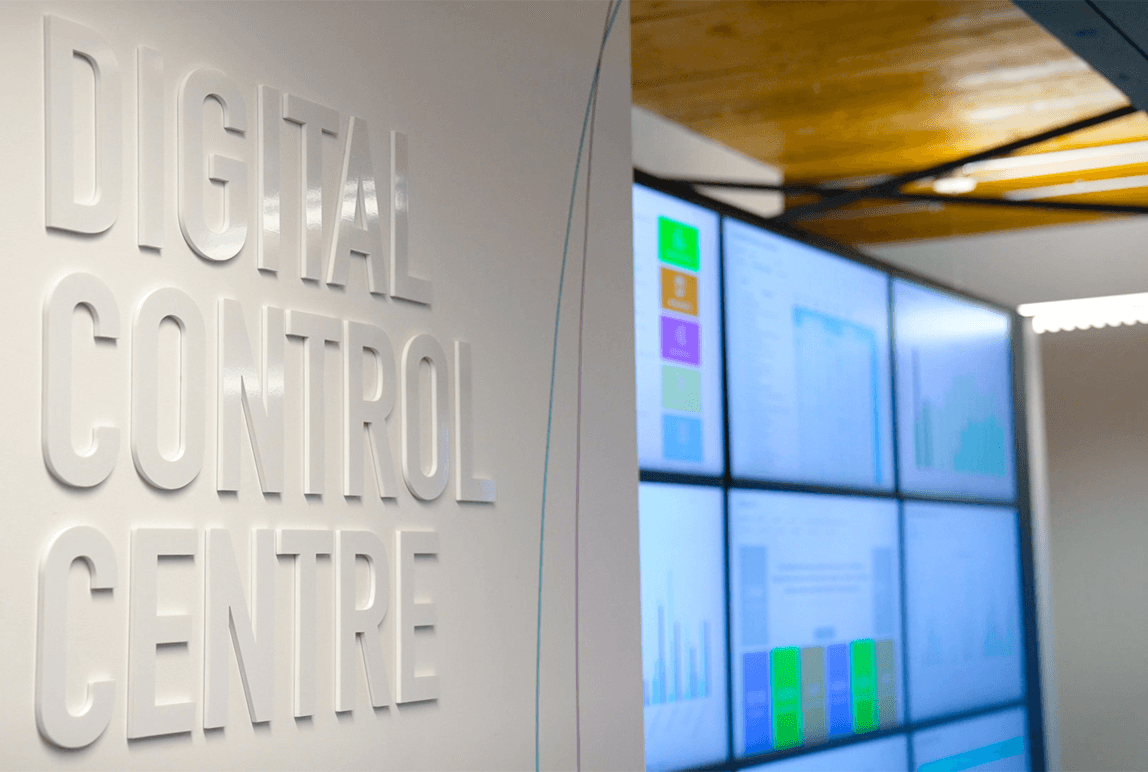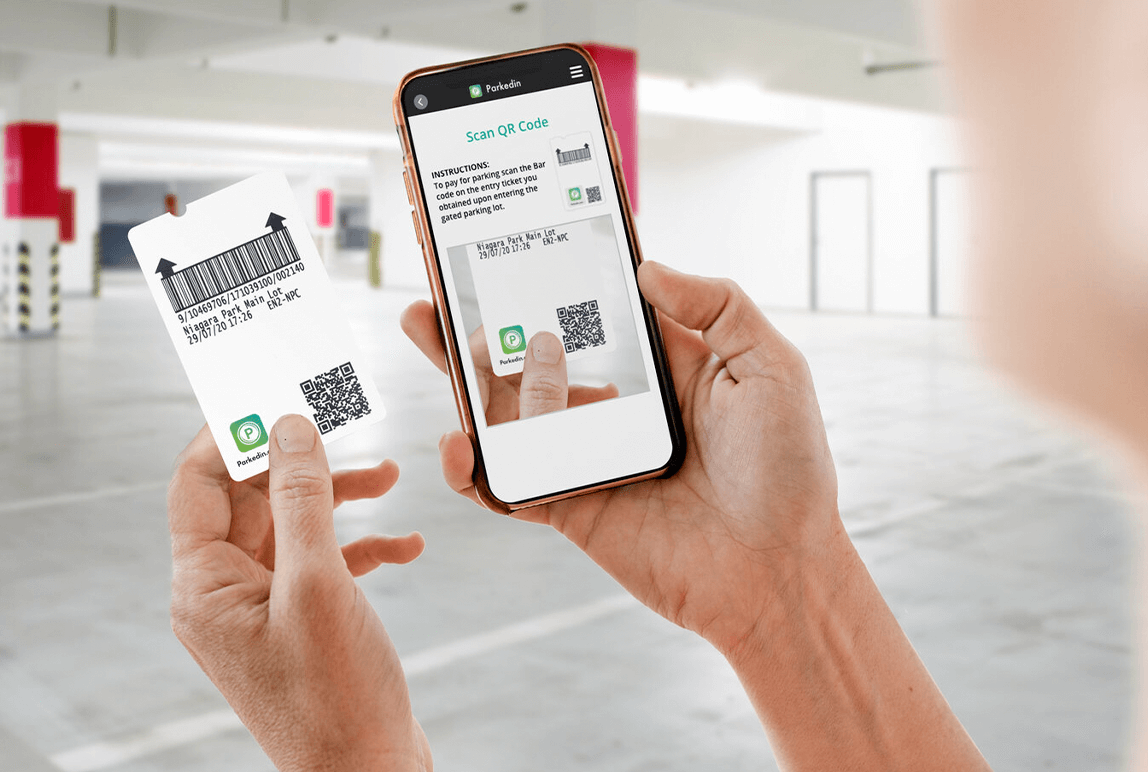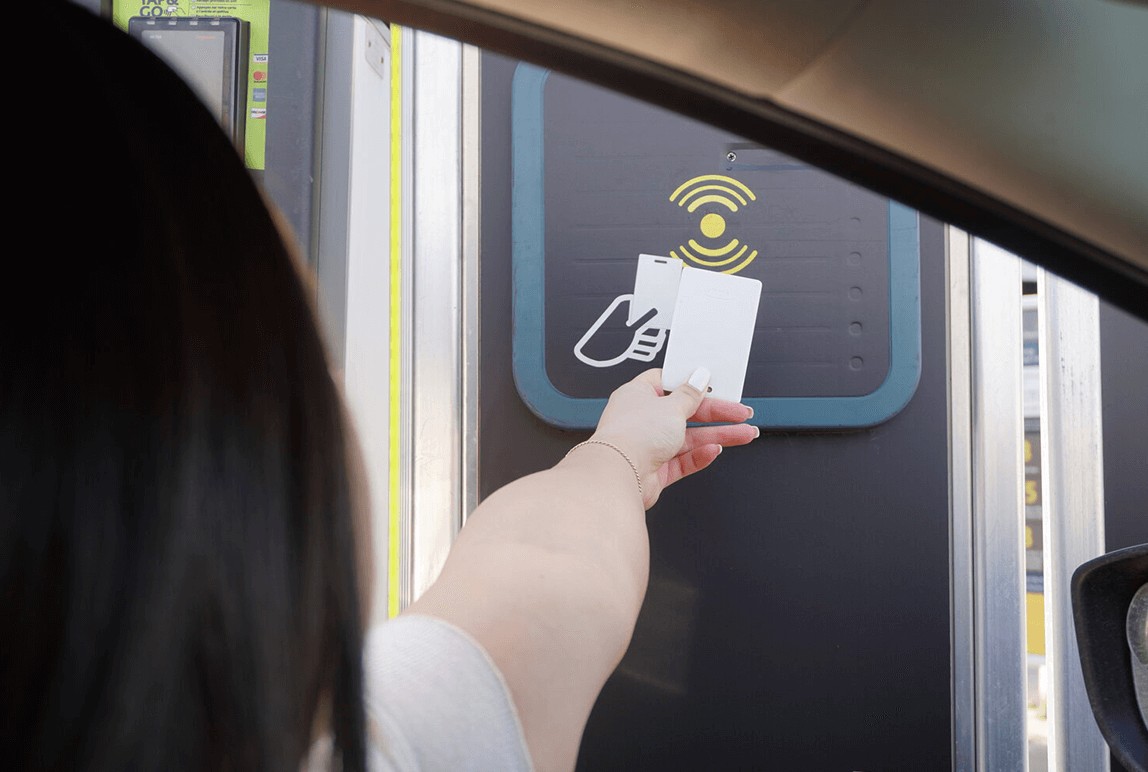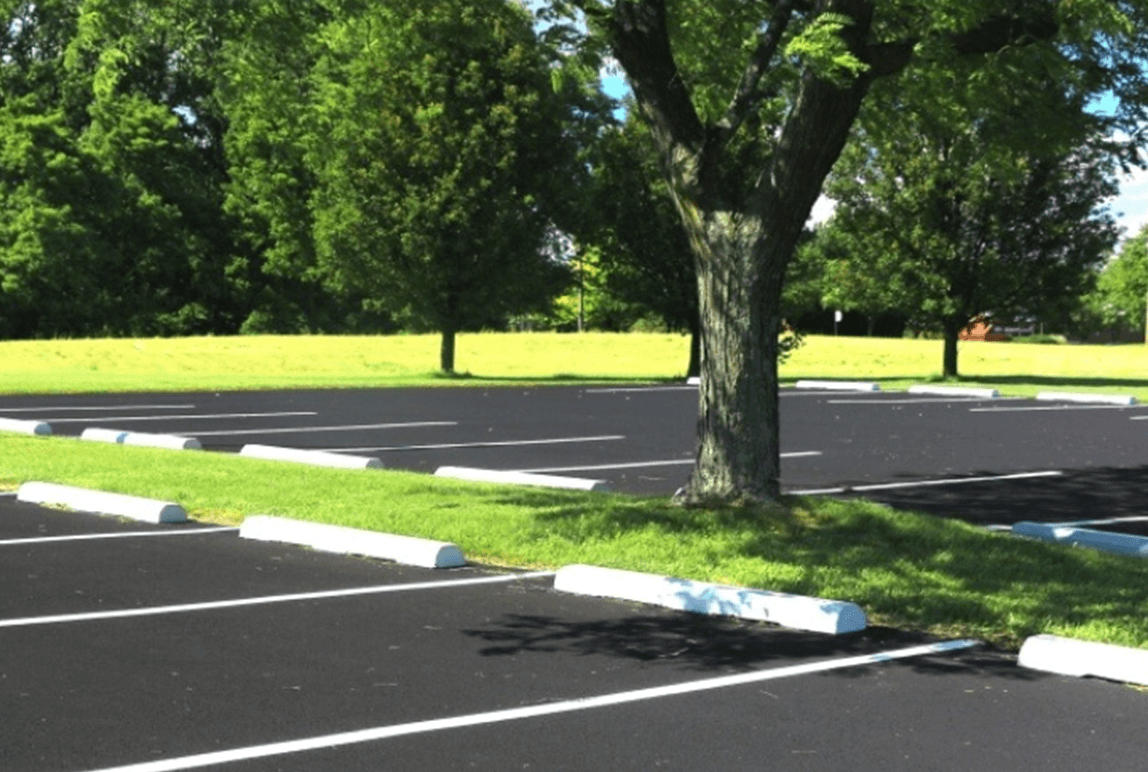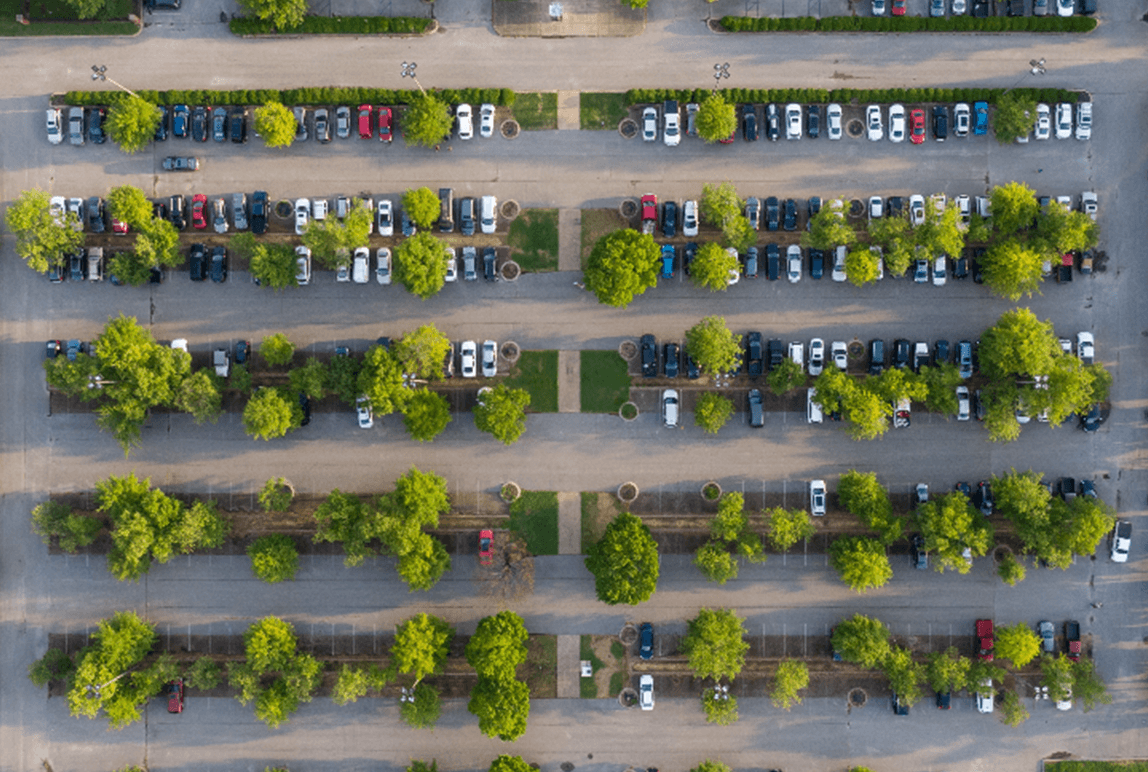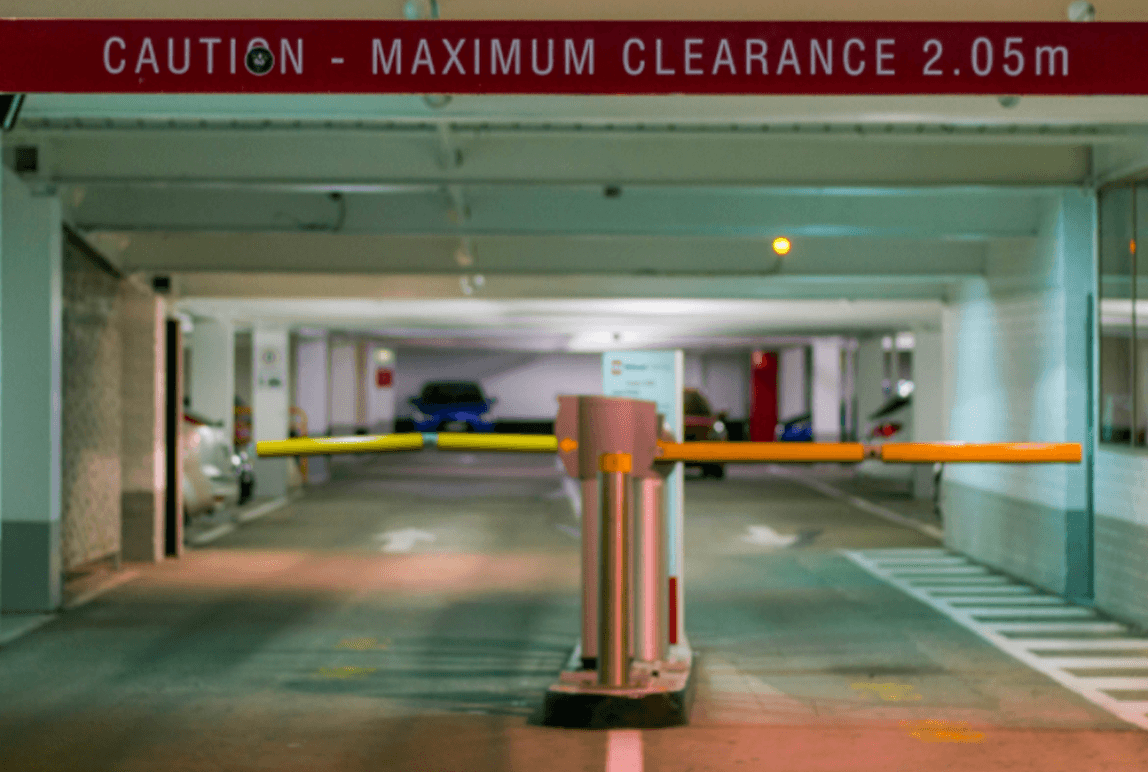DC Fast Charging: How Businesses Can Benefit
Posted: Aug, 24, 2020 11:29AM ET • 6 min read
Originally published on ChargePoint.
We’ve covered the basics of EV charging speeds in the past, but as EVs gain longer range and fast charging technology advances, I’m seeing more organizations interested in DC fast charging. As EVs are expected to make up 58% of new passenger vehicle sales (and 31% of the whole vehicle fleet!) by 2040, every organization must figure out a way to serve EV drivers. In this post, I explain the differences between Level 2 AC charging and DC fast charging, and give tips on how to tell whether DC fast charging will work for your business. In later posts, I’ll address how you can plan ahead for success with DC fast charging (if you need it at your location).
The Gas Station Model Is Over (Think Mobile Instead)
Before you can understand the different EV charging speeds, you need to know that the way EVs are fueled differs from how gas cars are fueled. EV drivers like me rarely make a separate trip to fuel their cars. Instead, we plug in wherever we are and go about our lives, whether that means charging overnight at home (my go-to), in the parking lot during the workday or while out for a shopping trip.
I think of it kind of like the transition from landlines to mobile phones. Mobile phones started by people asking, Why do I have to go somewhere to make a call? Why can’t I do that anywhere? The same is true for EV charging. Why do I have to go somewhere special? We should expect to charge wherever we park. EV charging means I don’t have to go somewhere else to fuel as the norm.
Typically, EV drivers use Level 2 AC charging, which adds about 25 miles of Range Per Hour of charging. While charging may take longer than filling up with gas, that’s okay—most cars spend more than 90% of the time parked, so there’s ample opportunity to charge. This means DC fast charging is not the primary method of fueling for most EVs.
Where Fast Charging Fits In
Though it’s not the primary way EV drivers charge, DC fast charging offers a convenient option for EV drivers when parked for a short amount of time, whether making a long trip or visiting quick-stop retail or fast food restaurants. It can also be an important component of the charging mix for light, medium or heavy-duty fleets that need to stay charged up for their routes. So how do AC and DC charging differ, and how do you know whether fast charging is right for your site?
The Difference Between AC and DC Charging
Power outlets deliver AC (alternating current) power to devices, but batteries need DC (direct current) power to charge. AC charging relies on an “on-board charger” inside the vehicle to convert AC to DC to charge the battery. The AC charging speeds available (“Level 1” or “Level 2”) vary depending on the voltage of the AC outlet and the vehicle’s on-board charger speed. DC fast stations convert AC power to DC within the station, delivering DC power directly to batteries and enabling a much faster charge. DC charging speed varies based on many factors, including the battery’s current state of charge, the power level of the charger and the vehicle battery’s capacity to take in power. You might have noticed that your mobile phone charges more slowly when it’s almost full. Vehicle batteries are similar, but with much more power involved.
Level 1 AC Charging: Too Slow
Level 1 charging simply connects an EV to a standard 120-volt, 20-amp circuit (found in your average wall outlet). It adds about 4 miles of Range Per Hour, taking more than 60 hours to fully charge a vehicle with 250 miles of range. While Level 1 can work overnight for some plug-in hybrids with limited electric range and a gas engine, it’s typically too slow to effectively replenish long-range EVs or fleet vehicles. Level 1 charging also tends not to be networked, so there is no way for drivers to find it or businesses to manage it. Level 1 chargers don’t qualify for the many grants, rebates and other incentives available for EV charging. As a result, we don’t recommend that businesses explore this option.
Level 2 AC Charging: The All-Around Choice
Level 2 charging solutions add roughly 25 miles of Range Per Hour of charging and are an ideal choice for locations where people will stay parked for a few hours, like single-family homes, apartments, condos and office buildings. They’re relatively affordable to deploy, easy to manage and appealing to customers, making them a good fit for many types of businesses and fleets. For fleet vehicles that stay parked overnight, Level 2 typically provides more than enough time to get a full charge.
DC Fast Charging: Just Right for Some Situations
We’ve covered the basics of when and how to use DC fast charging for EV drivers. Businesses and fleets can look at DC fast charging similarly. It has many advantages, such as the ability to charge more quickly and serve more drivers in a day. However, it also has costs: the stations themselves are more expensive, the site buildout is more extensive and you’ll need a greater electrical supply. Still, the investment can be worth it for high-traffic areas along major roads or for heavy-duty fleets with mission-critical charging needs.
A Quick Comparison of Charging Speeds
This handy chart provides a brief overview of the Level 2 and DC fast charging options available to you.
Networked Stations Are a Must at Any Speed
No matter what charging speed you choose, you’ll want to choose networked EV charging solutions. EV drivers can find your networked stations through a mobile app and patronize your business while they charge. Networked charging solutions give you cloud-based control over who can access your stations and how much it costs drivers to charge, and they deliver data on how people are charging at your site. Level 1 stations are typically not connected to a network, so it’s not easy for drivers to find the stations or for station owners to manage them.
In addition, networked stations make economic sense because smart power management can share electrical capacity across stations, avoiding expensive infrastructure upgrades. Networked solutions can get updates over the air, so they’re always up to date with the latest features for you and your drivers. When you choose a mix of AC and DC charging, you can also prioritize DC fast charging to guarantee that those stations always deliver a charge when needed.
The information in this post should get you off to a good start, but there’s still much more to learn about EV charging speeds. Dive into the details in our guide to making the right choice between Level 2 and DC fast charging, or take our quick online course if you’re an AEC member.
Share Article:
ABOUT THE AUTHOR
Bill Loewenthal
Senior Vice President, Product
Bill Loewenthal has decades of experience in general management and product leadership, specializing in market-based business planning and cross-functional execution. Bill has had success in a variety of industries, including telecom, internet, consumer electronics and media. As a global product leader, he has deep experience in portfolio management and platform businesses including connected devices, hardware, software, and B2B2C. Bill has held leadership roles at Plantronics, ReplayTV, Mitsubishi and several startups. Over the course of his career, Bill has helped launch products that have become essential to the lives of millions. He leads Product Management, User Experience, and Technical Docs teams. He holds a B.S. from San Jose State University.
Questions?
Fill out the form below and we will do our best to connect you with a suitable contact.


